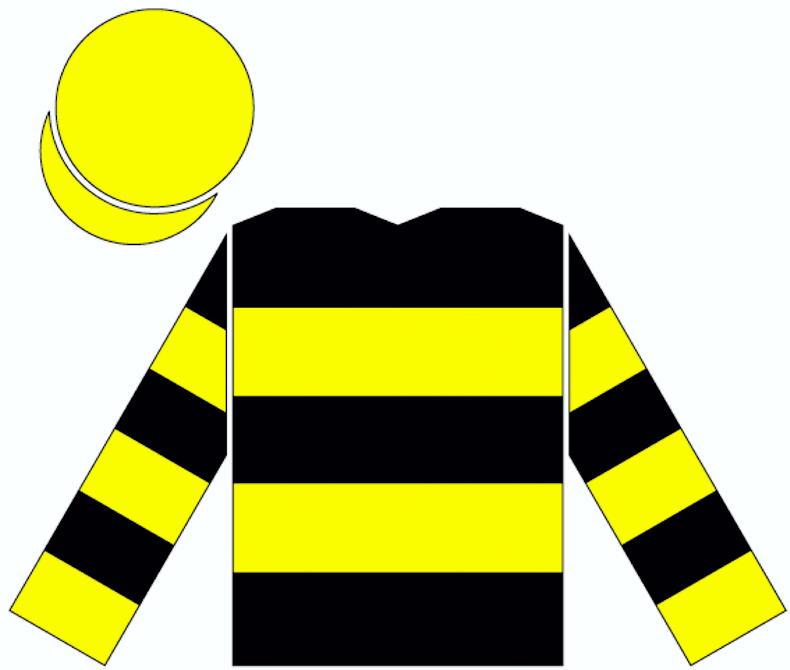LAST week I looked at the champion fillies and mares of 1993, Lochsong, Intrepidity and Lemon Souffle, and found out what influence they had subsequently as broodmares. To say the results were mixed would probably be an understatement, with only Jeff Smith’s Lochsong able to claim some degree of success in her second career.
This week I go back another decade, to 1983, and check out three more Timeform champions, the two-year-old Treizieme (The Minstrel), and a pair of three-year-old fillies, Luth Enchantee (Be My Guest) and Habibti (Habitat).
The most notable thing about all three is that some or all of their biggest wins that year were gained in France, while two of the fillies were trained there, and Luth Enchantee was bred in the country.
Let us start with the youngest of the trio, the American-bred Treizieme. Owned by Tom Tatham and trained by Maurice Zilber, she raced just twice at two, but on her second start she achieved the rare feat of beating the colts in the Grand Criterium at Longchamp, the race now known more commonly as the Prix Jean-Luc Lagardere.
Being so lightly raced, Timeform at the time felt it was difficult to decide whether Treizieme was an exceptional filly, the first to win the race in 17 years, or whether the juvenile crop that year was a moderate group. History would show that the latter was in fact the case.
That said, Treizieme did go on to win a few more Group 3 races, place in the Group 1 Prix Vermeille and Grand Prix de Saint-Cloud, and she ended her racing days in the USA at the age of five.
Made headlines
Before she even faced a starter, Treizieme had made headlines. When she sold as a foal at Keeneland she realised $500,000, equalling the then record price for a filly foal. A daughter of the sensational The Minstrel, she comes from an outstanding female line, being one of eight winners from Belle Pensee (Ribot). That mare also bred the Group 2 Yorkshire Cup winner and Group 1 Ascot Gold Cup runner-up Eastern Mystic (Elocutionist). Belle Pensee is a half-sister to the Group 1 juvenile winners Charming Thoughts (Bold Lad) and Junius (Raja Baba), successful in the Cheveley Park Stakes and Middle Park Stakes respectively.
Treizieme enjoyed moderate success at stud, with six of her eight foals winning, led by the US stakes winner Oakmont (Alydar). Her first foal, Shadha (Devil’s Bag), was stakes placed in the USA, while a grandson, Brancusi (Deputy Commander), didn’t win a stakes race but was runner-up in the Grade 1 Blue Grass Stakes.
Luth Enchantee
Owned and bred by Paul de Moussac and trained by John Cunnington junior, Luth Enchantee was the outstanding miler of 1983, but she bookended that racing season with two fruitless years racing. Placed on one of her two starts as a juvenile, she lost her way at four and was winless in six starts.
However, her second season saw her win four times, and these included inflicting defeats on L’Emigrant in both the Group 1 Prix Jacques Le Marois and the Prix du Moulin de Longchamp. She also was third in the Group 1 Prix de l’Arc de Triomphe behind two other fillies, All Along and Sun Princess, and that field that year comprised 26 of the best racehorses about. All of this happened to a filly who took seven starts to land her maiden win.
Luth Enchantee was in the second crop sired by Be My Guest (Northern Dancer), the first containing the classic winners Assert and On The House. That initial momentum did not continue for the Group 2-winning miler.
Be My Guest went on to sire just six more Group/Grade 1 winners, his last being the 1999 Poule d’Essai des Pouliches-French 1000 Guineas winner Valentine Waltz. His son Go And Go is still the only European-trained winner of a US Triple Crown race.
Over jumps
Luth Enchantee’s third dam won three times over jumps in France, and was a sibling to a number of winners in that code. The family could have developed in another way, but Luth Enchantee’s dam was a listed winner on the flat and descending from her are the likes of Group 1 winners Lune D’Or (Green Tune) and Japanese classic winner Fierement (Deep Impact), and the Tally-Ho Stud stallion Inns Of Court (Invincible Spirit).
Luth Enchantee had just six foals, half of them being minor winners. She is grandam of Khumba Mela (Hero’s Honor), winner of the Group 3 Prix Chloe and Grade 3 Noble Damsel Stakes, and from whom descends the 2021 Group 2 German 2000 Guineas winner Mythico (Adlerflug).
Brilliant sprinter
Habibti raced in an era of brilliant speedsters, with the likes of Marwell and Soba racing about the same period. Habibti (translated from Arabic as my darling) can lay claim to have been one of the best ever, and she was bred in Ireland by John Costelloe at Moygaddy Stud, near Maynooth.
Habibti was sired by the great Airlie Stud stallion Habitat (Sir Gaylord), and she sold as a yearling for 140,000gns. Racing for Mohamed Mutawa, she was trained by John Dunlop and showed early brilliance when she was unbeaten at two, her victories including the Group 2 Lowther Stakes and the then Group 2 Moyglare Stud Stakes.
Placed in the Group 1 1000 Guineas, she was dropped back in trip later and it was then that she showed what a star she was, with four stunning victories and each time confirming her superiority over Soba. She won a pair of Group 1 races, the July Cup and the Prix de l’Abbaye de Longchamp, and two races that are now Group 1s.
Vigorous ride
At four, Habibti produced one of the best wins of the year, at Royal Ascot in the Group 1 King’s Stand Stakes. She was six lengths behind the leaders with a quarter of a mile to run, but under a vigorous ride from Willie Carson, Habibti made ground throughout the closing stages and caught Anita’s Prince on the line to win by a short head. It was to be the last of her nine career wins.
Given that her unplaced half-sister Eight Carat (Pieces Of Eight) would go on to become one of just two mares in history to breed five Group 1 winners, it might be reasonable to expect that Habibti would enjoy plenty of success herself. On the contrary, she had a dozen living foals and just two of them won. That said, many of her descendants made their way to Australia and New Zealand and enjoyed some success.
The first foal to survive out of Habibti was Reem Albaraari (Sadler’s Wells) who was placed at two. She did breed a Group 1 winner in Morshdi (Slip Anchor) who won the Derby Italiano and Grosser Preis von Berlin, while running second in the Group 1 Irish Derby. No fewer than nine stakes winners in the southern hemisphere have Habibti as a taproot, the best of these being Humidor (Teofilo), winner of three Group 1 races, the Australian Cup, Makybe Diva Stakes and the Memsie Stakes.


 This is a subscriber-only article
This is a subscriber-only article
 It looks like you're browsing in private mode
It looks like you're browsing in private mode







SHARING OPTIONS: